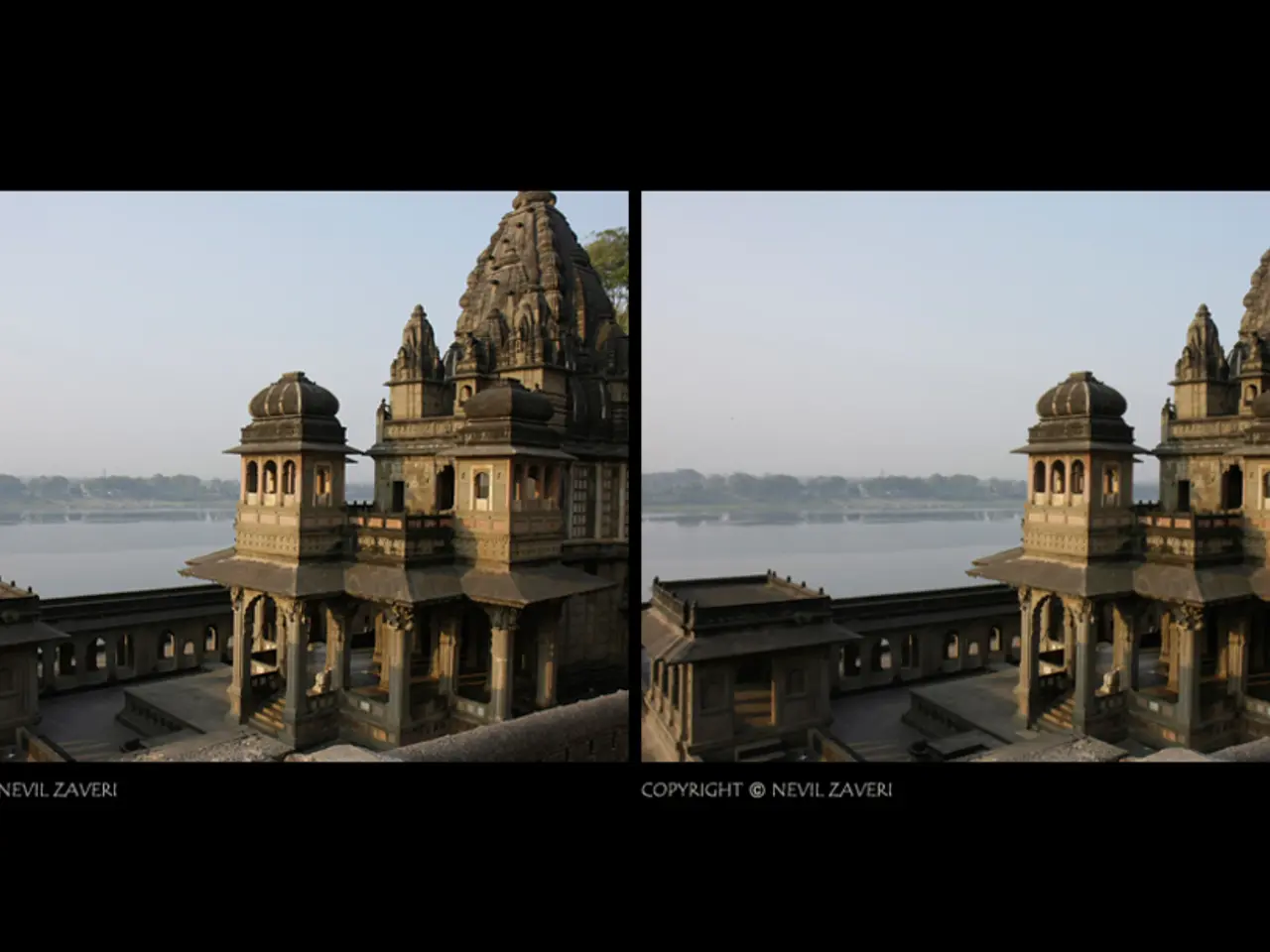Ranking of the Top Ten Temples Globally in 2025
Top 10 Temples in the World Showcase Civilizational Brilliance
In 2025, the world's most revered temples stand as a testament to architectural excellence, historical significance, and religious devotion. These sacred sites, spanning several cultures and centuries, offer a glimpse into the rich tapestry of human history.
- Temple of Heaven, China
Located in Beijing, the Temple of Heaven is an imperial complex that symbolizes the cosmic relationship between Earth and Heaven. The Hall of Prayer for Good Harvests, with its unique triple-eaved circular roof, is a gem of traditional Chinese architecture. This UNESCO World Heritage Site is celebrated for its cultural and architectural value.
- Angkor Wat, Cambodia
Angkor Wat, translating to "City Temple," is the largest religious structure in the world, originally constructed as a Hindu temple honoring Vishnu. It features five lotus-shaped towers, a large surrounding moat, and detailed bas-reliefs depicting religious and historical narratives. Today, it remains an active Buddhist temple and a cultural symbol of Cambodia.
- Wat Rong Khun, Thailand
Known as the White Temple, Wat Rong Khun is a modern, privately owned art project in the manner of a Buddhist temple. Created by artist Chalermchai Kositpipat, the temple's striking white color and mirrored glass mosaic decorations symbolize purity and wisdom.
- Prambanan, Indonesia
Prambanan is the biggest Hindu temple complex, honoring the Trimurti, and built in the 9th century. It showcases Hindu Vastu Shastra architecture and Hindu cosmological ideas. The tall and pointed architecture, detailed stone carvings depicting Hindu epics, make it a must-visit destination.
- Sun Temple, Konark, India
The Sun Temple in Konark is a 13th-century masterpiece that fuses architecture with astronomy. The temple's 24 intricately carved stone wheels function as sundials, measuring seasons. The entire structure is dedicated to the sun god Surya.
- Khajuraho Temples, India
The Khajuraho Temples, built by the Chandela dynasty between the 10th and 11th centuries, are renowned for their revolutionary interlocking stone construction without mortar. Over 870 sculptures, including famous erotic carvings demonstrating spiritual symbolism, adorn these temples.
- Ajanta and Ellora Caves, India
Ajanta features ancient rock-cut Buddhist cave temples with remarkable paintings using 1,500-year-old pigments and exceptional acoustics. Ellora includes the Kailasa Temple, carved top-down from a single rock cliff, showcasing coexistence of Buddhist, Hindu, and Jain elements.
- Brihadeeswarar Temple, Tamil Nadu, India
An iconic 11th-century Hindu temple dedicated to Shiva, the Brihadeeswarar Temple is famous for its colossal vimana (tower) and intricate carvings, representing South Indian temple architecture.
- Mayan Temples (e.g., El Castillo at Chichen Itza, Mexico)
The Mayan Temples, built between the 9th and 12th centuries by the Maya civilization, are known for their precise astronomical alignment and religious significance. The Temple of Kukulcan, or El Castillo, is a step-pyramid dedicated to the feathered serpent deity.
- Fushimi Inari-Taisha, Japan
Fushimi Inari-Taisha is a Shinto shrine in Kyoto famous for its thousands of vermilion torii gates which form scenic walking paths, dedicated to Inari, the god of rice and prosperity.
Other notable temples include Al-Khazneh, located in Petra, Jordan, a mausoleum or crypt carved into a pink sandstone cliff face dating back to the early 1st century CE. Borobudur in Central Java, Indonesia, the biggest Buddhist temple in the world, built in the 9th century, featuring a step pyramid with nine stacked platforms and more than 2,600 relief panels showcasing Buddhist cosmology and the biography of Buddha.
These temples collectively illustrate profound religious devotion, advanced engineering, artistic excellence, and cultural symbolism reflecting the civilizations that built them. Their historical depth and architectural uniqueness make them some of the best-preserved and most visited sacred sites in the world as of 2025.
- The unique architecture of Wat Rong Khun, Thailand, designed to symbolize purity and wisdom, reflects the contemporary lifestyle and artistic innovations in today's travel culture.
- A visitor's lifetime forms an incomplete circle without experiencing the awe-inspiring heritage of the Fushimi Inari-Taisha, Japan, embodying a modern travel itinerary steeped in ancient history and spiritual significance.




